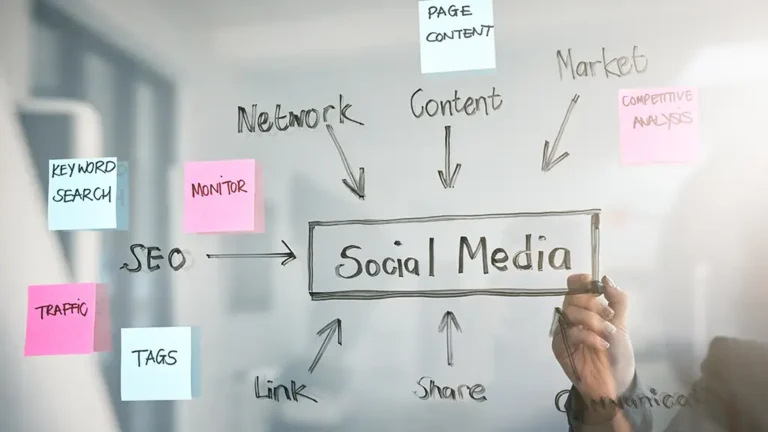How to Create a Winning User-Generated Content Strategy for Social Media
User-generated content (UGC) has become one of the most powerful tools in modern social media marketing. In a world where authenticity and trust play a critical role in consumer behavior, UGC offers a unique way for brands to connect with their audience on a deeper level. Unlike traditional branded content, UGC is created by real users, making it feel more relatable, trustworthy, and engaging.
From unboxing videos to customer testimonials, UGC showcases real-world experiences with your brand, fostering credibility and inspiring potential customers to take action. When consumers see others like them endorsing a product or service, they are more likely to trust the recommendation and engage with the brand.
UGC is also a cost-effective way to generate a steady stream of high-quality content. Instead of relying solely on in-house teams or professional creators, brands can tap into their audience’s creativity, expanding their reach and diversifying their content library. By incorporating UGC into your strategy, you can build a loyal community around your brand while driving engagement and conversions. A well-crafted UGC strategy can be the key to standing out in a crowded digital landscape, and working with a social media marketing agency can ensure your efforts are strategic, impactful, and aligned with your business goals.
Understanding Your Audience
Creating a successful UGC strategy begins with understanding your audience. Knowing who your customers are, what they care about, and how they interact with your brand is essential for encouraging meaningful participation. Your audience’s preferences and behaviors will shape every aspect of your UGC campaign, from the platforms you use to the type of content you request.
Start by analyzing your current audience demographics, interests, and online habits. Tools like social media analytics and customer surveys can provide valuable insights into what motivates your audience and how they engage with content. For example, a fashion brand targeting Gen Z might find that their audience prefers short-form video content on TikTok, while a tech company focusing on professionals may have better success with LinkedIn.
Understanding your audience also involves identifying the emotional triggers that resonate with them. What inspires them? What problems do they want to solve? By aligning your UGC strategy with these motivations, you can create campaigns that feel relevant and compelling. For instance, a travel brand might encourage users to share photos of their favorite destinations, tapping into the audience’s desire for adventure and escapism.
Once you have a clear picture of your audience, you can tailor your UGC efforts to ensure maximum participation and impact. The more your campaign reflects your audience’s values and interests, the more likely they are to contribute content that strengthens your brand’s message.
Setting Clear Goals for Your UGC Strategy
Before diving into a UGC campaign, it’s crucial to define clear and measurable goals. Knowing what you want to achieve will guide your strategy and help you evaluate its success. UGC can serve a variety of purposes, so aligning your goals with your overall marketing objectives is essential.
Some common goals for UGC campaigns include:
- Increasing brand awareness: Encouraging users to create and share content that features your brand or product can help expand your reach and visibility.
- Boosting engagement: UGC campaigns that involve challenges, contests, or interactive elements can drive likes, comments, and shares, fostering a sense of community.
- Driving conversions: User-generated testimonials, reviews, or demonstrations can build trust and inspire potential customers to make a purchase.
Defining your goals also involves determining key performance indicators (KPIs) to measure success. For example, if your goal is to increase engagement, track metrics like the number of submissions, hashtag mentions, or shares. If conversions are your focus, monitor website traffic or sales generated from UGC campaigns.
By setting clear goals, you can design a UGC strategy that aligns with your brand’s needs and provides tangible results. These objectives will serve as a roadmap, ensuring your efforts are focused and effective.
Choosing the Right Platforms for UGC
The success of your user-generated content (UGC) strategy heavily depends on selecting the platforms that best align with your audience’s preferences and the type of content you want to promote. Different platforms cater to different demographics and content formats, so understanding these nuances is key to maximizing participation and impact.
Platforms like TikTok and Instagram are ideal for visual and short-form video content. TikTok, for instance, thrives on challenges, trends, and viral moments, making it an excellent choice for engaging younger audiences. Instagram offers versatility, with options like Stories, Reels, and Feed posts, allowing brands to feature UGC in diverse ways. A lifestyle brand might find great success encouraging users to share product photos using a branded hashtag on Instagram.
LinkedIn, on the other hand, is a powerful platform for professional and B2B-focused UGC. Brands can encourage employees or industry partners to share testimonials, case studies, or thought leadership content, fostering credibility and trust within professional networks.
Platforms like Twitter are effective for conversational UGC, such as polls, threads, or tweet-based campaigns. For example, a tech brand could prompt users to share their favorite product hacks in a tweet format, generating buzz and engagement around their offerings.
When choosing platforms, consider where your audience is most active and what type of content they prefer to create and consume. Tailoring your UGC campaigns to these platforms ensures that the content aligns with user behaviors, increasing the likelihood of participation and success.
Encouraging Participation: How to Inspire Users to Create Content
The cornerstone of a winning UGC strategy is getting your audience excited to participate. To achieve this, brands must provide clear incentives and make the process of creating and sharing content as seamless as possible.
Challenges and contests are among the most effective ways to inspire UGC. By introducing a fun, goal-oriented campaign, brands can motivate users to contribute while tapping into their competitive spirit. For example, a fitness brand could launch a “30-Day Workout Challenge” where participants share daily progress photos using a branded hashtag, with the chance to win prizes.
Reward systems are another powerful motivator. Offering discounts, freebies, or exclusive access to content or events encourages users to share their experiences with your brand. A beauty brand might provide a discount code to customers who post makeup looks featuring their products, generating both engagement and sales.
Creating a sense of community is equally important. When users feel like they’re part of a larger movement or cause, they’re more likely to contribute content. For instance, a sustainable fashion brand might encourage users to share stories about how they’re reducing waste in their wardrobes, fostering a shared commitment to eco-conscious living.
Finally, clear and actionable calls to action (CTAs) are essential for driving participation. Phrases like “Share your story using #OurBrandJourney” or “Post your look and tag us for a chance to be featured” provide users with straightforward instructions, eliminating barriers to entry. The easier it is for users to participate, the more likely they are to engage with your UGC campaign.
Showcasing and Amplifying UGC
Once users start contributing content, it’s vital to showcase and amplify their efforts effectively. Featuring UGC not only acknowledges and rewards contributors but also creates a ripple effect, encouraging others to join in.
Start by highlighting UGC on your brand’s social media channels. Share user-generated posts on Instagram Stories, retweet compelling content on Twitter, or create a dedicated TikTok series showcasing your audience’s creativity. These efforts demonstrate that you value your community and appreciate their contributions, building loyalty and trust.
Incorporating UGC into paid campaigns can further amplify its reach. For example, a fashion brand might create a carousel ad featuring customer-submitted photos, showing real people enjoying their products. UGC in paid ads often performs better than traditional brand-created content because it feels more authentic and relatable.
Your website is another powerful platform for featuring UGC. Adding customer reviews, testimonials, or photos to product pages can boost conversions by providing social proof. A travel company, for instance, might feature user-submitted vacation photos to inspire potential customers and build trust.
Don’t forget to express gratitude to your contributors. Publicly thanking users or offering small rewards for their efforts fosters goodwill and encourages continued engagement. By making your contributors feel valued, you can turn one-time participants into long-term advocates for your brand.
Showcasing and amplifying UGC isn’t just about recognition; it’s about creating a feedback loop that drives ongoing participation. The more visible and celebrated UGC becomes, the more motivated your audience will be to join in, ensuring the success of your campaign over time.
Maintaining Authenticity and Relevance
Authenticity is the backbone of a successful user-generated content (UGC) strategy. As consumers become more adept at identifying overly staged or inauthentic content, brands must ensure that the UGC they showcase feels genuine and aligns with their values. Filtering and curating UGC without compromising its authenticity is a delicate balance that requires a thoughtful approach.
Start by setting clear guidelines for the type of content you’re looking for. Providing examples or templates can help ensure that submissions align with your brand’s voice and aesthetics while still allowing creators to infuse their personal style. For instance, a food brand might request photos of dishes featuring their products but leave room for users to style the shots in their unique way.
It’s also crucial to maintain relevance. The UGC you highlight should resonate with your target audience and reflect their interests, values, and experiences. For example, a tech brand targeting millennials might focus on showcasing user-generated videos of creative ways to use their gadgets in daily life.
Avoid over-curating submissions, as overly polished content can feel disconnected from the audience. Highlight a mix of polished and raw UGC to show that your brand values diversity and authenticity. By celebrating the imperfections and creativity of your community, you create a sense of trust and relatability that resonates with your audience.
Legal and Ethical Considerations
When implementing a UGC strategy, it’s essential to address legal and ethical considerations to protect both your brand and contributors. While UGC is an excellent way to build trust and engagement, mishandling permissions or failing to credit creators can damage your reputation and lead to legal challenges.
Always seek explicit permission before using user-generated content, especially for promotional purposes. While tagging the brand in a post or using a branded hashtag may imply consent, obtaining formal approval ensures clarity and avoids misunderstandings. For example, a fashion retailer featuring customer-submitted photos in ads should request written consent to use the images.
Properly crediting contributors is another critical element of ethical UGC use. Acknowledge the creator by tagging them or including their username in captions when reposting content. This not only respects their effort but also fosters goodwill and encourages further participation.
Brands should also be mindful of copyright and intellectual property issues. Ensure that users are the original creators of the content they submit and that their work doesn’t infringe on third-party rights. Additionally, transparency about how UGC will be used—whether on social media, in ads, or on your website—helps build trust and sets clear expectations.
By prioritizing legal and ethical considerations, brands can foster a positive relationship with their contributors and audience, ensuring their UGC campaigns remain a source of trust and engagement.
Measuring the Success of Your UGC Campaign
To understand the impact of your UGC campaign, it’s essential to measure key performance metrics and analyze the results. Unlike traditional advertising, where success is often tied to reach and impressions, UGC’s effectiveness lies in its ability to drive engagement, conversions, and community growth.
Engagement metrics, such as likes, comments, shares, and saves, are excellent indicators of how well your campaign resonates with your audience. High engagement rates suggest that your content is inspiring users to interact with your brand and share their experiences. For instance, a beauty brand running a UGC contest might track the number of submissions and hashtag mentions to gauge participation levels.
Conversions provide a more tangible measure of success, particularly for campaigns designed to drive sales or sign-ups. Tracking metrics like click-through rates, purchases, or downloads from UGC-driven campaigns can demonstrate their direct impact on your bottom line. Tools like unique discount codes or affiliate links make it easier to attribute these actions to specific pieces of user-generated content.
Monitoring audience growth and sentiment is also crucial. A successful UGC campaign should foster a sense of community and attract new followers who align with your brand. Sentiment analysis tools can help you gauge the tone of interactions and identify areas for improvement.
By analyzing these metrics and refining your approach based on the results, you can continuously improve your UGC strategy and ensure long-term success.
Building a Sustainable UGC Ecosystem
A single UGC campaign can generate excitement and engagement, but building a sustainable ecosystem ensures your brand reaps the benefits of user-generated content over the long term. The key to sustainability lies in creating a culture of participation where your audience feels motivated to contribute consistently.
Start by fostering a strong sense of community around your brand. Engage regularly with your audience through comments, shares, and shoutouts to make contributors feel valued. For instance, a fitness brand might feature “Member of the Month” posts highlighting users who share their fitness journeys, creating an ongoing incentive to participate.
Incorporating UGC into your broader marketing strategy also helps sustain momentum. Regularly feature user-generated content in your social media posts, newsletters, and website updates to keep it central to your brand identity. By integrating UGC into everyday communications, you encourage your audience to see participation as a natural and valuable part of their relationship with your brand.
Long-term campaigns or initiatives, such as ambassador programs or recurring challenges, further reinforce this ecosystem. For example, a travel brand might launch a year-long campaign encouraging users to share photos from their trips, with the promise of featuring the best submissions in an annual calendar or guidebook.
Sustainability also requires adaptability. Social media trends and audience preferences evolve, so staying attuned to what motivates your audience is essential. Continuously refreshing your approach, introducing new themes, and experimenting with platforms will keep your UGC ecosystem dynamic and engaging.
By building a sustainable UGC ecosystem, brands can transform occasional contributors into loyal advocates, ensuring their campaigns drive value well into the future.

















